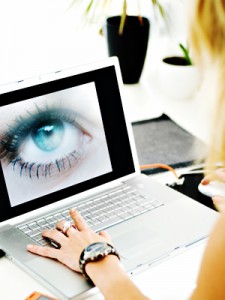 We all know that fashion editorials and magazine covers are highly retouched. And while we’ve seen the dramatic before-and-after photos of celebrities who magically shrink a few sizes and suddenly look wrinkle-free, Elizabeth Moss, the founder and head retoucher of Rare Digital Art, has released three time-lapse videos showing the power of retouching—and how sometimes, it can actually make photos look more realistic.
We all know that fashion editorials and magazine covers are highly retouched. And while we’ve seen the dramatic before-and-after photos of celebrities who magically shrink a few sizes and suddenly look wrinkle-free, Elizabeth Moss, the founder and head retoucher of Rare Digital Art, has released three time-lapse videos showing the power of retouching—and how sometimes, it can actually make photos look more realistic.
The fascinating videos show hours of Photoshop work condensed into 90-second clips to demonstrate exactly how much every detail can be retouched. We spoke with Moss about her videos and what good editorial retouching is really trying to achieve.
The two other videos show four hours of retouching (the dramatic eyelashes) and 90 minutes of retouching (the black-and-white video).
The intention behind most retouching—the kind we see in advertisements and magazines—is to remove so-called imperfections, like blemishes or undereye bags. Totally understandable. “In advertising, it’s about selling a product, and anything that distracts from that purpose is often removed,” Moss says, adding that some of these photos are often so severely retouched that the photo no longer stands out. In her work, however, Moss routinely enhances the appearance of pores, freckles, and subtle shadows under the eyes to humanize the photo, she says.
In fact—because life is unfair—Moss reveals that “sometimes a model’s skin is so naturally perfect that it looks over-retouched in the original files.” This happens when a photographer uses harsh lighting that brings out the model’s pores, which ends up making the model look “worse in the raw files than they do in person.” So Moss’s company will then use Photoshop to “add shadows” that will “bring [the models] back to looking as good as they do in person.” Oftentimes, “the final image is more dramatic and impactful than the softly lit image would have been.”
Moss believes it is important that the public understand two things when about editorials and advertisements: That they’re starting with a model who has “hit the genetic lottery,” and that “practically none of the images in magazines are published in their original state.” Moss says people need to adopt the same suspended belief that they do when they watch CGI movies when it comes to looking at advertisements and editorials.
“We shouldn’t compare ourselves to anyone else or feel self-conscious about what makes us different and unique. And we definitely shouldn’t look to [billboards and advertisements] to set our standards of what real people should look like.”











Leave A Comment
You must be logged in to post a comment.